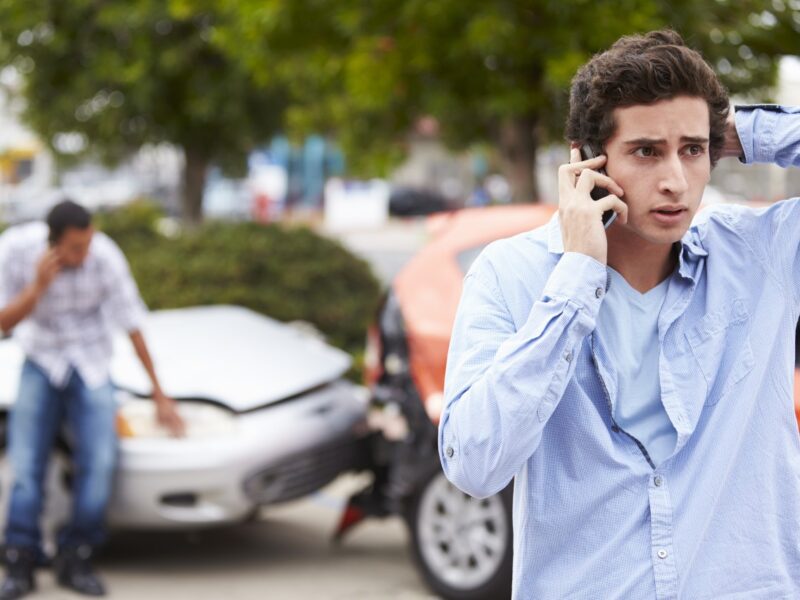Understanding Fault in California Car Accidents
After a car accident, one of the most important, and most stressful questions is: Who was at fault? In California, fault plays a major role in determining who pays for damages, whether through insurance or a personal injury lawsuit.
Whether you were rear-ended in San Francisco, T-boned in Oakland, or sideswiped on the Bay Bridge, this article explains how fault is determined in California, what evidence is used, and how a skilled car accident lawyer can help protect your rights.
California Is a “Fault-Based” (Tort) State
California follows a fault-based system for car accident claims. That means the person who caused the accident – or their insurance – is responsible for paying for injuries, property damage, and other losses.
Unlike “no-fault” states, you can:
- File a claim with your own insurance
- File a third-party claim with the at-fault driver’s insurer
- File a personal injury lawsuit
But in every case, determining who was responsible for the crash is critical.
What Determines Fault in a Car Accident?
Fault is based on negligence – which means someone failed to exercise reasonable care, and that failure caused the accident.
To determine fault, insurers, lawyers, or the court will examine:
- Police reports
- Photos/videos of the scene
- Witness statements
- Traffic citations issued
- Vehicle damage locations
- Surveillance or dashcam footage
- Cell Phone records (if distracted driving is suspected)
- Expert accident reconstruction reports
Common Examples of Driver Negligence leading to Fault:
- Speeding
- Texting while driving
- Running red lights or stop signs
- Unsafe lane changes
- Drunk driving
- Following too closely
- Failure to yield
- Distracted driving
Even something as seemingly minor as a rolling stop at a 4-way intersection in Berkeley can lead to a crash – and liability.
What If More Than One Person Is at Fault?
California uses pure comparative fault rules. That means more than one person can be held partially liable, and each party’s compensation is reduced by their percentage of fault.
Example:
If you’re awarded $100,000 but found to be 20% at fault, you can still recover $80,000.
This makes determining fault in a car crash accurately incredibly important, because insurance companies often try to shift blame to reduce what they owe.
Who Decides Who’s at Fault?
There are three main stages where fault may be determined:
Insurance Companies
- Insurance adjusters for each insurer will review evidence and decide who they believe is at fault.
- They may try to lowball your claim or deny liability altogether.
Attorneys (Negotiation Stage)
- If you hire a personal injury attorney, they’ll gather evidence, challenge the insurer’s findings, and negotiate a higher settlement.
Courts (If a Lawsuit Is Filed)
- If a fair settlement can’t be reached, a judge or jury will decide fault and award damages accordingly.
Tip: Insurance companies are not neutral. They are for profit companies. Their goal is to pay as little as possible. Having a skilled personal injury lawyer on your side levels the playing field.
What to Do After a Car Accident to Protect Yourself
To help support your version of events and protect your claim:
- Call 911 and request an ambulance- obtain a police report
- Take photos of all vehicle damage, road signs, skid marks, debris
- Get witness names and contact information
- Don’t admit fault at the scene
- Seek medical attention immediately
- Talk to a car accident lawyer before speaking with any insurance company
Even if you think you were partly at fault, you still can pursue a claim and may still be eligible for significant compensation.
How a Lawyer Can Help Prove Fault
Experienced car accident lawyers know how to investigate a crash and build a strong case, including:
- Analyzing crash reports and photos
- Conducting scene inspections
- Interviewing witnesses
- Hiring accident reconstruction experts
- Issuing subpoenas for surveillance video or dashcam footage
- Challenging the insurance company’s version of events
The Hassell Law Group has helped thousands of injured drivers in the Bay Area get maximum compensation after serious car accidents. If fault is disputed, or the insurer is giving you the runaround, we can help.
Don’t Let the Insurance Company Decide the Story
Insurance companies often try to manipulate the narrative to favor their bottom line. Don’t rely on them to determine fault fairly.
Get a knowledgeable car accident lawyer on your side early in the process – especially if:
- You were seriously injured
- There’s a dispute over fault
- There were multiple vehicles involved
- A government or commercial vehicle was part of the crash
- The other driver was drunk, hit and ran, or was not insured
Time Limits Matter: California’s Statute of Limitations
In most cases, you have 2 years from the date of the accident to file a personal injury lawsuit in California.
If the at-fault party was a government agency (e.g., city-owned vehicle), you have only 6 months to file a claim.
The Hassell Law Group Can Help You Establish Fault and Win Compensation
We’ve recovered millions of dollars for clients throughout San Francisco, Oakland, San Jose, and beyond. Let our award-winning legal team help you prove fault, protect your claim, and get the compensation you are entitled to recover.
Free consultation. No fee unless we win.
FAQs: Fault in California Car Accidents
Can both drivers be at fault in a car accident in California?
Yes. Under California’s comparative fault laws, multiple drivers can share responsibility. Your compensation is reduced by your percentage of the fault.
What if the police report is wrong about who’s at fault?
Police reports are influential but are not binding on you. A lawyer can challenge police errors with evidence such as photos, videos, expert reports, and witness statements.
Is California a no-fault state for car accidents?
No. California is a fault-based (tort) state, meaning the at-fault party’s insurance is responsible for damages.
How can I prove the other driver was at fault?
Gather evidence like photos, video, witness info, and the police report. A personal injury lawyer can build your case and deal with the insurance company.
What if I’m partly to blame for the accident?
You can still recover damages under California’s pure comparative fault rule, but your compensation will be reduced by your percentage of fault.
The general information provided on this website should not be considered legal advice and does not constitute legal advice. For legal advice, you should consult directly with an attorney. If you contact us by telephone, email, letter, or by contact form submission through this website, please note that such communication does not create or constitute an attorney-client relationship. We cannot act as your attorney until we are hired as your attorney by a formal written agreement.


 Is California A No-Fault State For Car Insurance?
Is California A No-Fault State For Car Insurance?